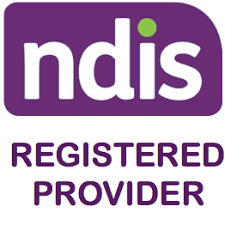Apps
Definition of Down Syndrome
Down syndrome (Down’s syndrome) is a genetic disorder causes by the presence of all or part of an extra copy of chromosome, i.e. the 21st chromosome called trisomy 21.
Causes of Down Syndrome
In the process of reproduction, both parents pass on genes to their children. Genes are carried on chromosomes, so each cell receives 23 pairs of chromosomes from both parents to make 46 chromosomes. But due to some defect during division, one chromosome does not separate properly, leading to an increase in the number of chromosomes, i.e. one chromosome is extra, which is chromosome 21. This leads to defects in mental and physical health.
Types of Down Syndrome
There are three types of Down syndrome:
- Trisomy 21 - this type of Down syndrome occurs when each cell in the body has 3 separate copies of chromosome 21 instead of the usual 2 copies.
- Translocation - this type of Down syndrome occurs when a part of chromosome 21 or a whole extra chromosome 21 is present, but it is attached or translocated to a different chromosome rather than being a separate chromosome 21.
- Mosaicism - this type of Down syndrome occurs when a child has an extra copy of a chromosome in some and not all cells means a mixture or combination of Trisomy 21 and Translocation.
Symptoms of Down Syndrome
Physical symptoms:
- Flat facial features.
- Head and ears are small.
- Short neck.
- Protruding tongue.
- Eyes slanting upward.
- Aberrant shaped ears.
- Substandard muscle tone.
Developmental difficulties
- Oral motor difficulties.
- Fine motor and gross motor difficulties.
- Learning difficulties.
- Speech and language difficulties.
- Impulsive behaviour.
- Behavioural issues (e.g. stubbornness, non-compliance).
- Poor judgment.
- Short attention span.
- Numeracy difficulties.
- Verbal short term memory difficulties.
For more support with developmental difficulties see:
- Communication Strategies for Individuals with Profound and Multiple Learning Difficulties
- Challenges Faced by Neurodiverse Students at School
- Strategies for Improving Attention Span and Avoiding Distraction
Possible medical complications:
- Heart anomalies present at the time of birth.
- Hearing defects.
- Poor eyesight and cataract (clouded eyes).
- Interrupted breathing during sleeping, i.e. Sleep apnea.
- Dementia.
- Joint dislocations, specifically hip.
- Obesity.
- Defective tooth growth.
- Underactive thyroid i.e. hypothyroidism.
- Chronic constipation.
- Dementia.
- Alzheimer’s disease.
References
Behaviour Help
If you are supporting an individual with this diagnosis, please refer to our services and resources. They aim to help children, adolescents and adults achieve better communication, social, emotional, behavioural and learning outcomes. So whether you are wanting guidance on parenting, teaching, supporting or providing therapy, Behaviour Help is at hand.
Note: This is not an exhaustive list of all the possible causes, symptoms and types but some general information that can be further explored. Based on what you have read if you have any concerns about an individual, please raise them with the individual/s. The caregiver can then raise these concerns with their local doctor who can provide a referral to the relevant professional (e.g. paediatrician, psychologist, psychiatrist, allied health professional and learning specialists) for diagnosis and treatment if appropriate.
Get Started with Behaviour Help App
Assess-manage-prevent behaviours of concern efficiently and effectively with the Behaviour Help App.

